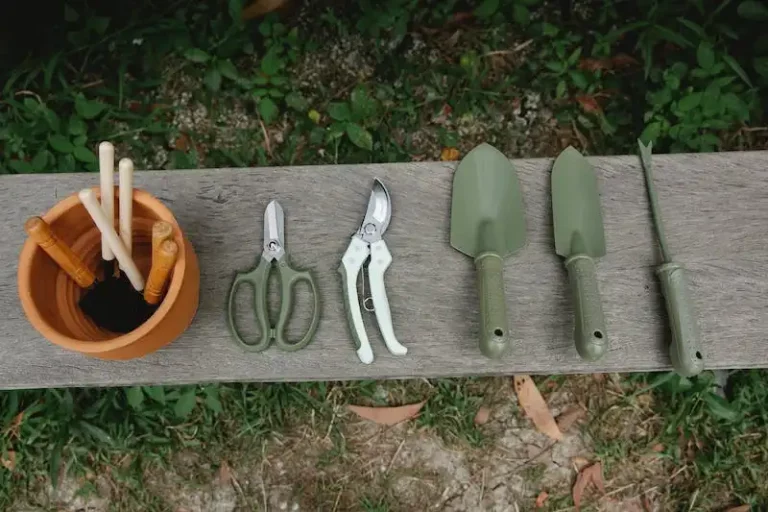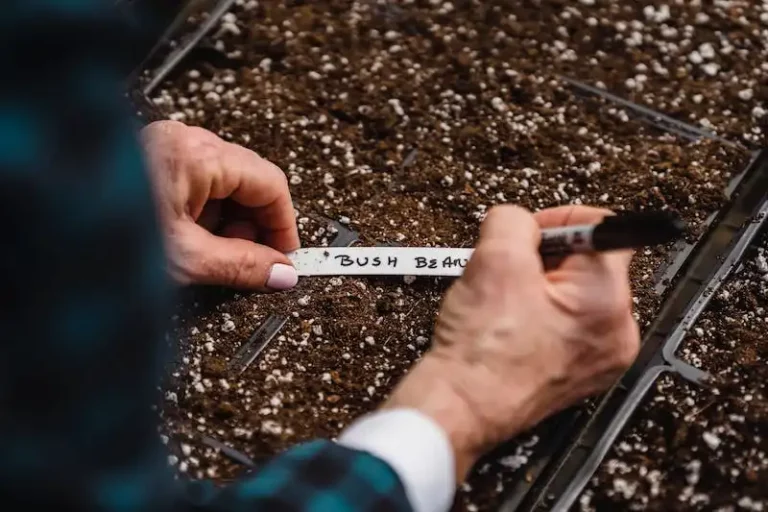Transplanting asparagus seedlings and crowns is an essential task for asparagus growers. In this article, we will discuss why and when it is necessary to move asparagus plants, as well as provide tips and advice on how to do it.
Asparagus plants can be started from seeds or seedlings. When starting from seeds, it takes an extra year for the plants to reach maturity and produce a crop. However, starting from seed has its advantages, as it allows you to grow a larger number of plants at a lower cost. On the other hand, starting from seedlings gives you a head start and allows you to have an earlier harvest.
Whether you are moving seedlings or crowns, proper care should be taken to ensure the plants are transplanted in a new bed where they can thrive. This includes digging a hole deep enough to accommodate the roots, ensuring that the roots are spread out, and covering the plant with enough soil to keep it well moist and in place.
Transplanting asparagus can be a tricky task, as the plants have a deep root system and do not like being disturbed. However, with proper preparation and care, it is possible to successfully move asparagus plants. The key is to dig up the plants when they are dormant, usually in early spring or late fall, and replant them in a new location as soon as possible.
When transplanting asparagus crowns, it is important to keep their crown buds at or just below the soil surface. This is where the new shoots will emerge from, so you want them to be well-positioned for optimal growth. Dividing the crowns can also help increase your asparagus yield, as it allows you to spread out the plants and start new beds.
In conclusion, transplanting asparagus seedlings and crowns is a necessary task for asparagus growers. Moving the plants takes careful attention and preparation, but it is well worth the effort for a healthier and more productive crop. By following the tips and advice provided in this article, you can ensure a successful transplanting and enjoy a bountiful asparagus harvest for years to come.
Source: This article was written by the author of our moving asparagus plants page for more information, please visit the page.
How to Transplant Asparagus Tips and Care
Transplanting asparagus is a process that takes time and care. As a gardener, if you’re planning on moving your asparagus plants to a different site, it’s important to know how to properly transplant them to ensure their survival and continued growth.
When transplanting asparagus, there are two main options: moving seedlings or established crowns. Seedlings are the result of germinating asparagus seeds, while crowns are the fully-grown asparagus plants, with roots and shoots. Depending on what you have and what you are looking to establish, the methods may differ slightly.
If you have asparagus seedlings that you want to transplant, it’s best to wait until the plants are well-established and have reached a good size. This will generally take about one to two years from when the seeds were initially planted. Once the seedlings are grown enough, you can carefully dig them up, ensuring to take as much of the root system with them as possible, and move them to your newly prepared bed.
For established asparagus crowns, the process is slightly different. In early spring, when the asparagus plants are still dormant, you can dig up the crowns and move them to a new location. It’s important to dig around the plants and lift them out carefully, making sure not to damage the roots. Once lifted, the crowns can be replanted into a well-prepared bed at the new site.
Regardless of whether you are moving seedlings or established crowns, it’s crucial to prepare the new site well in advance. Asparagus plants prefer a full-sun location with well-drained soil. They also need enough space to spread out, so make sure to allow for adequate spacing between each plant.
When transplanting, make sure to cover the roots properly and water thoroughly to help the plants establish themselves in their new location. Asparagus plants require regular watering, especially during the growing season, to keep the soil moist. It’s also a good idea to mulch around the plants to help conserve moisture and suppress weeds.
Asparagus plants may take a few years to fully establish themselves and produce a good yield, so patience is key. However, with proper care and attention, your transplanted asparagus plants can thrive in their new location and provide you with many delicious harvests to come.
When to Transplant Asparagus
If you’ve grown asparagus from seedlings or crowns, you may be planning to transplant them at some point. When should you do it? There are a few factors to consider.
Most asparagus seedlings and crowns should be transplanted from early spring to early summer. This is the best time because the plants need time to establish their roots before the next growing season.
Before you move the plants, make sure to thoroughly water them. This will help the soil stay moist and make it easier to separate the plants from each other.
When transplanting, be careful not to damage the fragile roots or crowns. Lift the plants gently from the soil, starting from the bottom and working your way up. If some roots break off, it’s not a big deal, as mature asparagus plants have plenty of them.
When replanting, make sure to dig a hole deep enough to accommodate the entire root system. The asparagus plant should be planted slightly deeper than it was before, as this will help the roots spread out and establish themselves.
If you’re not sure how deep to plant the asparagus, a good rule of thumb is to cover the crown with about an inch of soil. The crown is the area where the roots meet the stems.
The transplanting process can be a bit tricky, as asparagus plants don’t like being moved. But with some care and attention, you can successfully transplant them and have a new crop that takes well to its new location.
So, when is the right time to transplant asparagus? The answer is simple: when the above-ground portion of the plants starts to sprout, it means they’re ready to be moved. Just be sure to give them enough time before the growing season begins.
Transplanting asparagus plants can be a daunting task, but if done at the right time and with proper care, it can yield great results. So, why not give it a try?
Remember, if you need any guidance on how to prepare for transplanting or dividing mature asparagus plants, there are many resources available to help you through the process.
Why Transplant Asparagus
Transplanting asparagus plants or starting them from seeds is a common practice among gardeners. There are several reasons why gardeners choose to transplant asparagus:
- Season: Asparagus is a seasonal crop, and transplanting allows you to have fresh asparagus throughout the year.
- Growing Conditions: Transplanting asparagus plants to a different location can help optimize growing conditions, such as soil quality, sunlight exposure, and drainage.
- Help for New Plants: Transplanting asparagus seedlings or crowns gives them a better chance to establish and grow compared to direct sowing.
- Dividing and Moving: Transplanting can be done when older asparagus plants need to be divided, allowing each plant to have enough space to grow and develop.
- Preparing for a New Crop: Transplanting asparagus is often done when gardeners want to start a new crop or rotate their asparagus planting location.
In this article, we will cover how to transplant asparagus seedlings and crowns, including the preparation and steps involved in the process. Transplanting asparagus can be a tricky task, but with proper planning and preparation, it can be done successfully.
Tip
Transplanting asparagus seedlings or crowns requires careful planning and preparation to ensure successful establishment in their new growing location. One tip that makes the process easier is to create a raised bed for the asparagus plants.
When transplanting asparagus seedlings, it’s important to dig deep enough to include all of the roots. This can be tricky since the roots grow deep and spread out. A depth of at least 12 inches is recommended to accommodate the root system.
If you’re transplanting mature asparagus crowns, dig deep enough to fully cover each crown. The crowns should be planted about 6 to 8 inches deep to allow for proper growth and yield. This depth also helps to protect the crowns from cold weather and prevents them from being exposed to the surface.
Before moving the seedlings or crowns to their new site, it’s crucial to prepare the soil thoroughly. Asparagus plants prefer a well-drained soil with a pH level between 6.0 and 7.0. Amend the soil with organic matter, such as compost or aged manure, to provide the plants with necessary nutrients.
When transplanting asparagus crowns, it’s recommended to divide them into separate plants if needed. This process involves carefully separating the individual crowns and ensuring that each piece has a good set of roots. Dividing the crowns can help increase the yield and spread the plantings.
It’s also important to note that transplanting asparagus should be done in the spring, preferably early in the season. This gives the plants enough time to establish their roots and prepare for the upcoming growing season.
If you’re a new gardener and haven’t had much experience with transplanting asparagus, it may be helpful to consult a reliable source or refer to a guide on the proper techniques and tips for successful transplanting. The Ohio State University Extension has a detailed page on their website that covers all the necessary steps for transplanting asparagus.
In conclusion, transplanting asparagus seedlings or crowns is a process that requires careful planning and preparation. Creating a raised bed, digging deep enough to accommodate the roots, and dividing the crowns if necessary are all important steps to ensure successful transplantation. By following these tips and considering the specific needs of asparagus plants, you can increase the chances of a bountiful harvest and healthy growth.



